The day after Christmas, I had an appointment in a parking lot with a man who I can best describe as Paul Giamatti playing a Jewish pornographer. I contacted him about some photography equipment he was selling on Craigslist; an hour later he gave me a time to show up at a 7-11 on Queens Boulevard. He used to do lingerie shoots at the motel across the street, he told me. The models loved it.
Still, a bargain is a bargain, and the 12 by 12 foot seamless backdrop stand he had was the final piece of my indoor bonsai puzzle. My faith in the scuzzy beauty of Queens was refilled.
Earlier in December I realized that the cheap clip-on grow lights I bought weren’t going to cut it for serious bonsai growth. Trees need more light than houseplants or lettuce, more than any of the popular basic grow lights can provide. But I kept collecting new indoor trees. I like having them close. So it was time to upgrade my setup.
Creating a good growing environment indoors is an uphill ride all the way. You can never get enough light. The air is too dry. There’s no wind to strengthen branches. If you don’t have giant south-facing bay windows and want your trees to thrive rather than merely survive, you can’t half ass this, and something’s likely to go wrong even if you’re doing everything right.
After dozens of hours of research I can confidently say that affiliate marketing has successfully ruined the internet in the field of grow light recommendations. At least if you’re looking for lights made to grow plants, not look good while doing so at an e-commerce-conversion-sensitive price. I don’t want to name names, but I’m shocked by the lack of rigor. Not a single news or lifestyle publication had a useful guide for serious grow lights written by someone I’d trust. In many cases, the presence of a product on a mainstream outlet’s list was enough of a hint to knock it off mine.
I realized that the best way to find answers was by looking for people with skin in the game: cannabis growers. These are the people who track which type of LED a Chinese light manufacturer uses month to month the way sushi nerds follow chefs from bar to bar. They’ve done impressive research and have documented it marvelously at every step of the way.
Here’s my resulting setup, with a couple caveats. First, this is not a tutorial. I have no idea what I’m doing. There are people way smarter than me who’ve been doing this for decades, like Jerry Meislik, who you should turn to for sound and tested advice. Second, this setup is designed for my particular circumstances: a homebody who comfortably sleeps in 45 degree air and has lots of time to fiddle with hygrometers. Your needs will likely vary, and there’s no shortcut to finding out what your needs are besides doing your own research. With this in mind, I tried to follow three core tenets:
For my budget and commitment, I’m interested in “advanced hobbyist” level equipment. I want great bang for my buck and am willing to sacrifice most aesthetics for performance.
My system needs to be easy to automate. I want to spend time with my plants, not wifi-enabled thermometer apps. To this end I’ll settle for some suboptimal conditions if it means a more livable setup.
I don’t want the setup to draw a ton of power, and I don’t want to replace equipment often.
There’s a corner of my kitchen I call the tropical zone. With lights on, the temperature is in the high 70s in the winter. This is where I keep my trees that don’t go through a dormancy period of any kind: two ficus, a calamansi citrus, and for the moment some houseplants that need a boost to help them through the season.
The weed people discuss many brands of grow lights. T5 fluorescent bulbs appear to be the gold standard, but they’re energy intensive and give off lots of heat. LEDs last longer, burn fewer dinosaurs, radiate little heat, and are starting to catch up to conventional light sources in terms of output. I settled on Mars Hydro, a Chinese manufacturer with a solid reputation and prices I could swallow as a Chanukah gift to myself. An analog timer keeps the lights on for 16 hours a day. My power bill is certainly higher, more akin to summer figures, though the price of power has skyrocketed recently so I’m not sure how much of that increase is from greater usage.
Now here’s where Paul Giamatti’s backdrop stand comes in. The Mars Hydro light has four hanging points that connect to two adjustable straps. It’s only eight pounds, but that’s more than most light stands can support from an overhanging position. I didn’t want to drill into my ceiling, either; I wanted the flexibility to move and adjust my setup if needed. This Calumet stand can telescope to 12 feet high and 12 feet wide. It’s made to support rolls of thick paper for photo backdrops. As a hobbyist photographer, it’s handy for me to have one of these anyway. And I just love photo equipment. Unlike seemingly everything else we buy today, it’s built to last. My dad, a former commercial photographer, is fond of saying he could hammer nails into walls with his old film cameras.
You can see the difference the grow light makes in the leaves of the purple coleus above. The two cuttings in the foreground are dense and lush—all new growth from sitting one foot underneath 704 LEDs drawing 300 watts. The mother plant’s leaves in the background are two to three times larger and far less saturated. It’s too soon to say how my trees like it, but I’m cautiously optimistic. Look at all the flower buds on my calamansi, it’s almost obscene! The top layer of leaves is actually bleached from sunburn, which is temporarily unfortunate but encouraging for the long term.
After this round of flowering I’ll remove all but one of the nascent fruits to preserve the tree’s energy for new vegetative growth. Then I need to give it a serious prune. The calamansi has three trunks branching from the same junction that’s causing a bulge. Eventually that bulge will disrupt the profile of the tree, so one of the main trunks has to go, along with the top portions of the canopy. I’m anxious with anticipation; a few weeks ago I lost most of the interior leaves, I think due to underwatering. The tree should be vigorous enough to put out new growth after pruning, but you never know. At least I don’t.
The tropical zone is much drier than I’d like. This winter the relative humidity has hung between 10 and 20%, climbing to 30% on the odd rainy day. I’d be happier if I could get that number closer to 50. The pomegranates seem to like it; jury’s out on the ficus, which continue to flush new growth while letting old leaves yellow with every watering. In January I impulse-bought a Texas ebony—a spiny bean tree that, much like Texas, is really from Mexico. Texas ebony thrives in dry air, I’m told. Mine never got the chance. Transplant shock from winter shipping killed it.
Weed people address humidity by encasing their growing surface in a tent lined with reflective mylar. With nowhere to go, moisture from the plants stays in the air, so much so that most setups include a fan to increase airflow and keep mold growth at bay. This may one step too far for me. The tents are bulky and ugly, and 95% of the time you’re looking at fabric phone booth, not your pretty trees.
I may relent in the end, but first I want to see how spring and summer treat the microclimate. There’s no air conditioning in the kitchen and summers get swampy here, so I’m hoping I can keep the nearby window open to suck in all that moisture.
I still have another room of trees to talk about, but this post is long enough and the clock just hit 2am. So my indoor bonsai tour will resume next week with Part 2: The subtropical peninsula!
Tree reading
If you live in New York I urge you to read about the campaign to add a million additional trees to the city. [New York Times]
An invasive beetle called the emerald ash borer has devastated America’s ash tree population. How Oregon foresters are saving seeds in the hopes of keeping this important tree alive. [OPB]



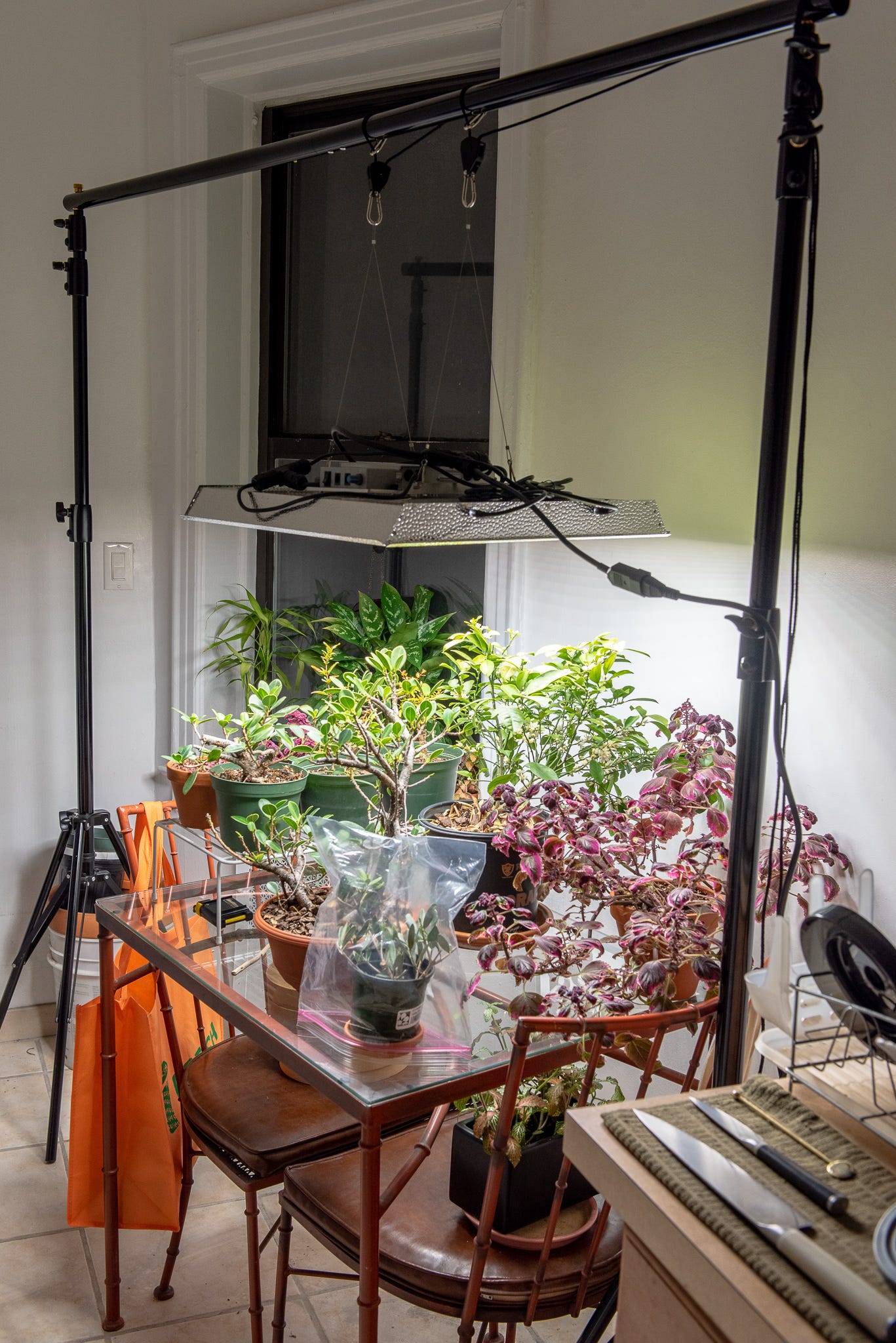
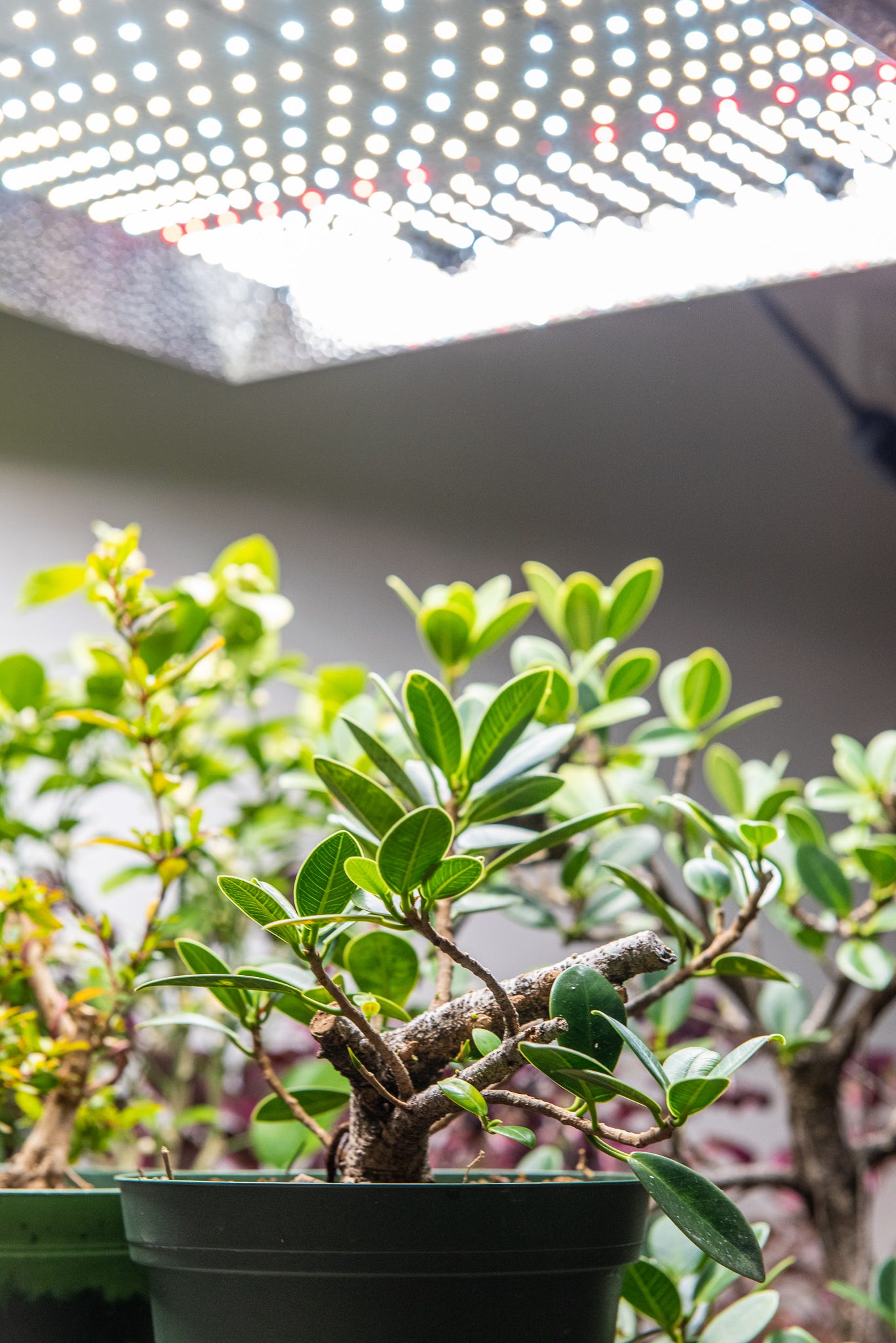
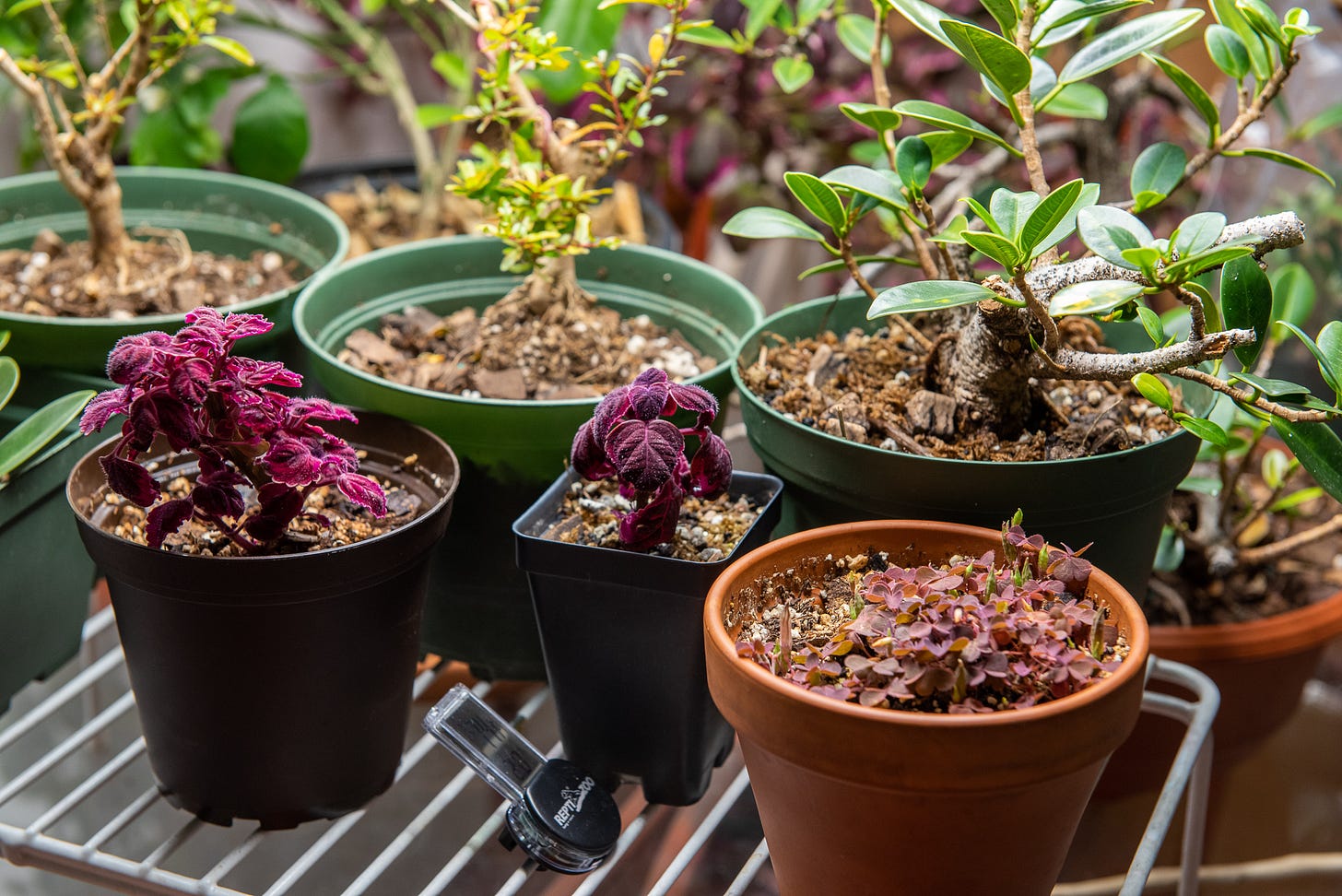
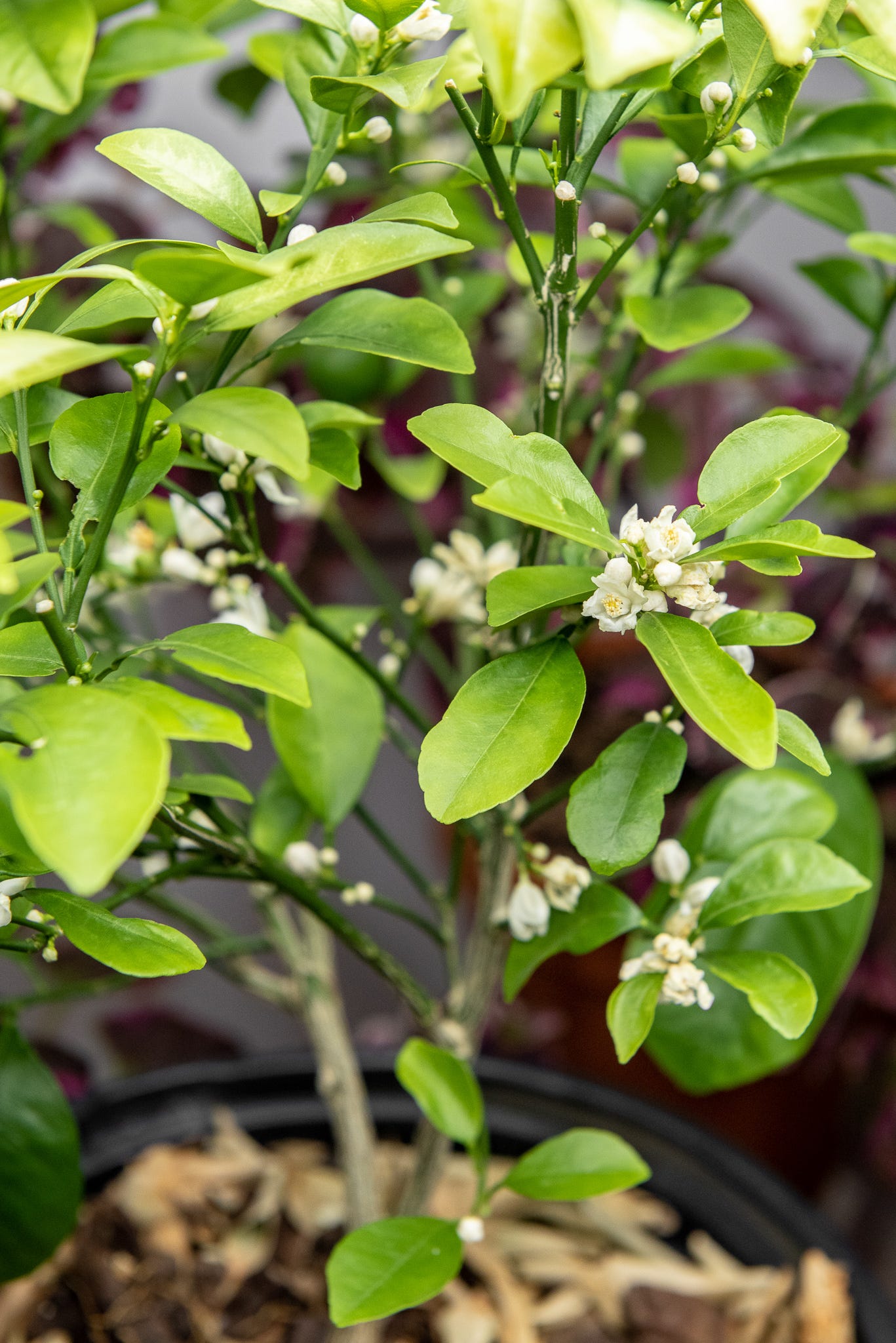
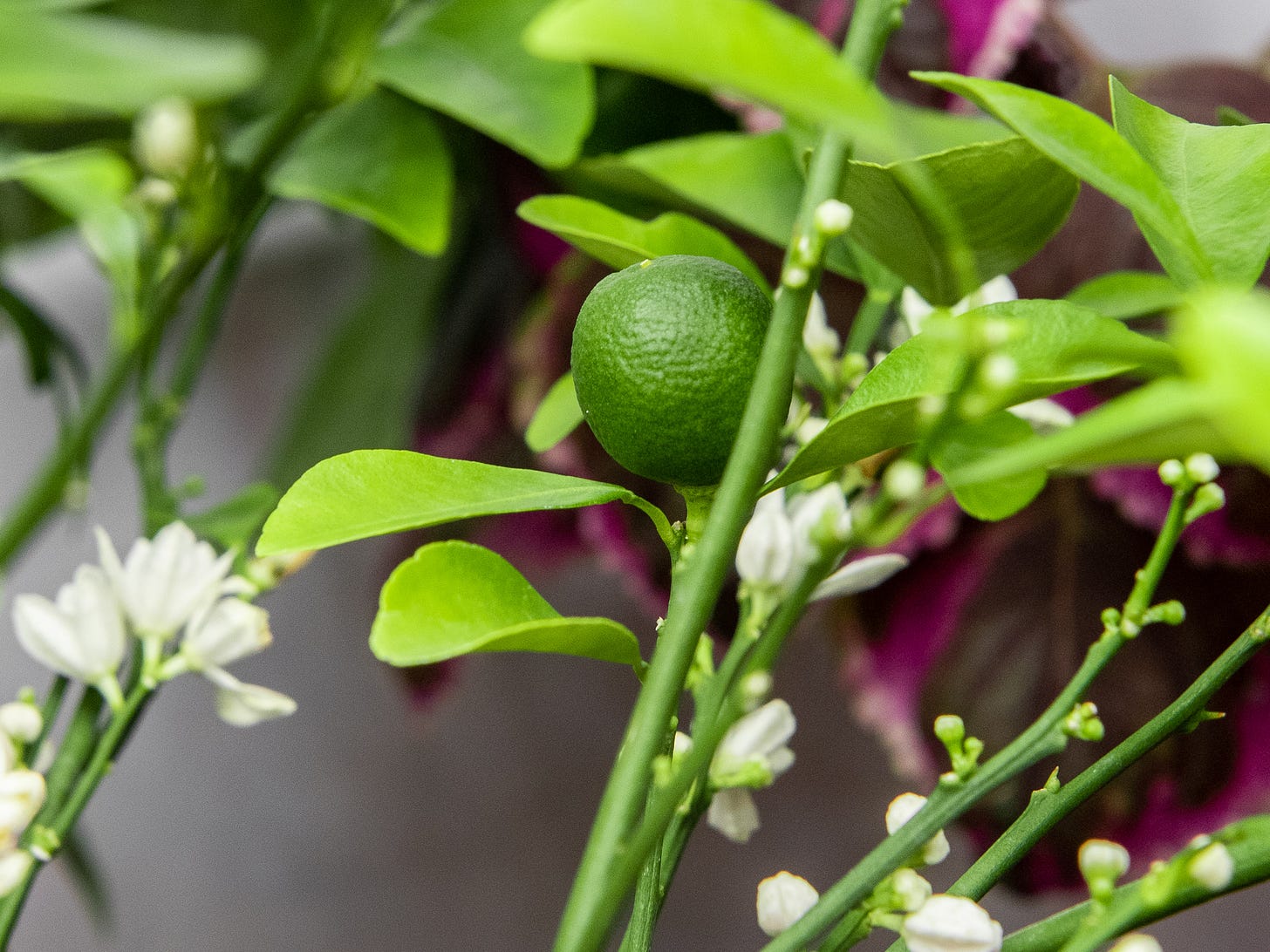
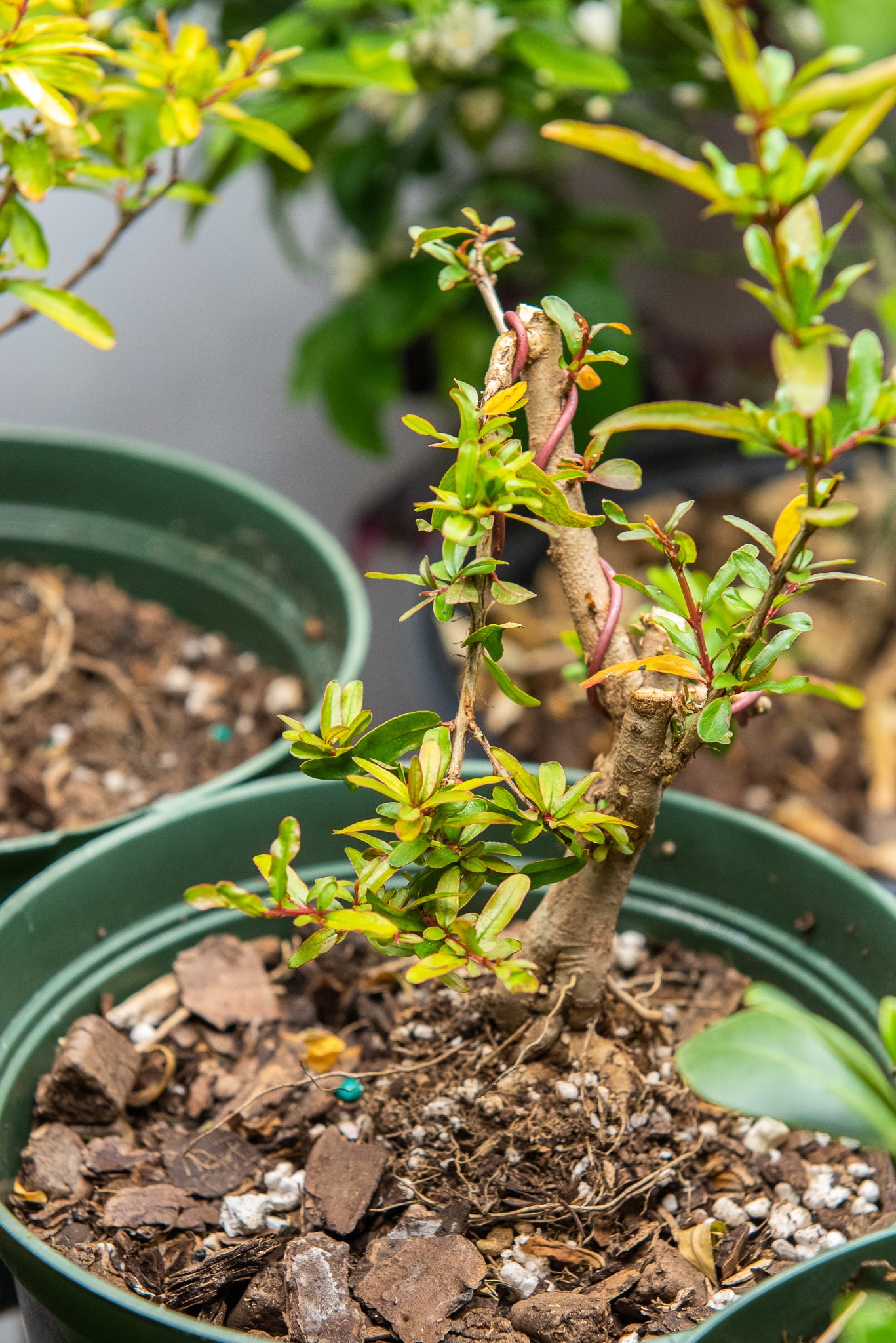

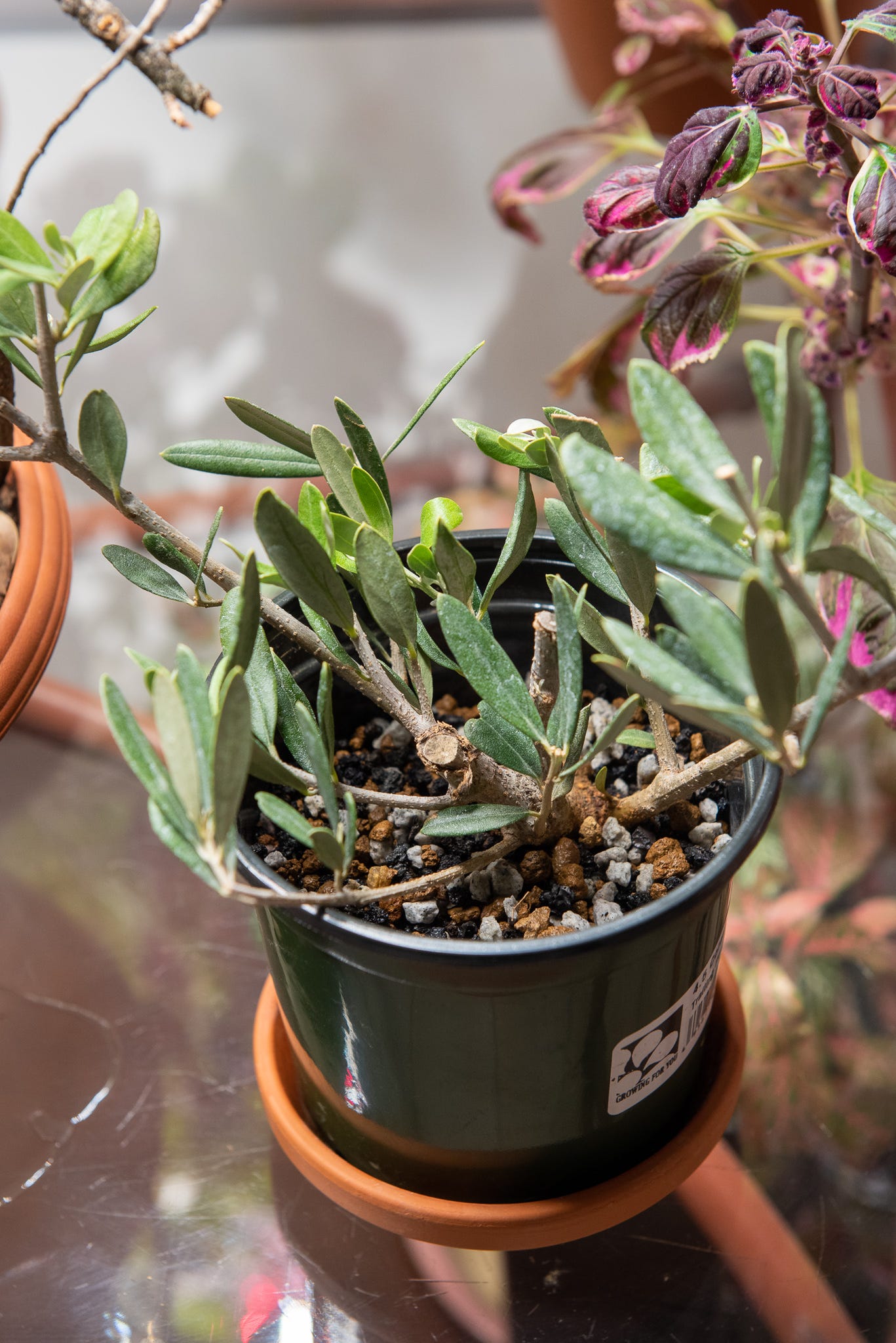
I completely resonate with your thoughts about “affiliate links”. I love the creative way you got this done. 👍